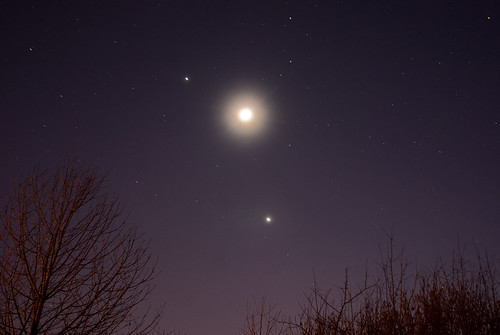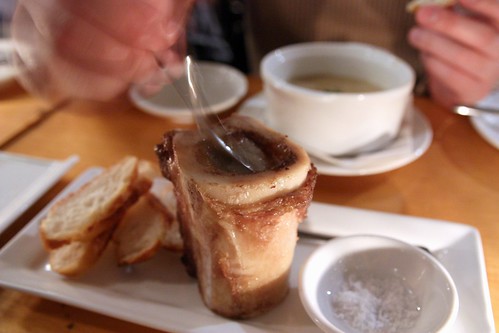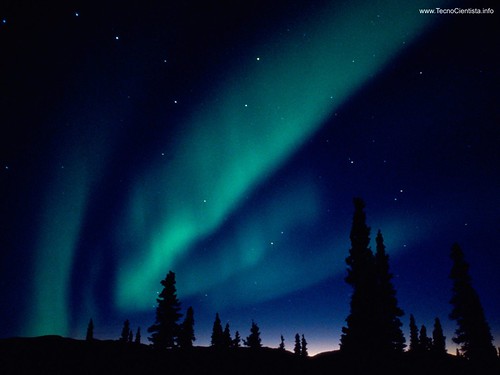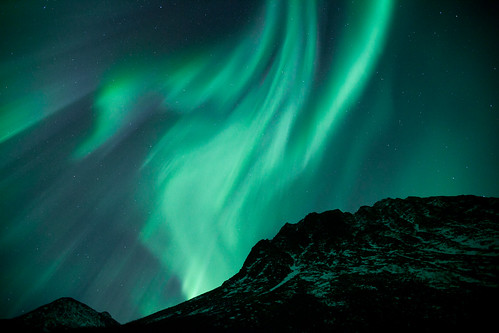New Fasting Moon
**** **** **** **** **** **** ****
Have you seen the moon these last few nights? We're a week into the new moon and it has been a lovely little crescent hanging in the western sky in the early evenings. I had a rough day at school early this week but when I walked out of the building at 5pm, I saw the fingernail moon peeking out from between some fluffy clouds. I watched it all evening as I drove home and took the dog for a walk and it was like a beacon to remind me of the beauty of the day even in the midst of all the hard. Last night I was treated to an even better show; the crescent moon and two bright planets! Venus and Jupiter were shining out the haze of an
approaching storm. Apparently, Venus and Jupiter will be getting closer and closer together as the month goes by and Mercury can be seen right behind the setting sun, and soon Mars will be visible rising in the East in the early evenings. What a great way to start a month!
 |
| by Pierre J. |
As I was preparing to write the blog post I went back to review my posts from the winter and read the chapter in Annette Hinshaw's Earth Time Moon Time for the upcoming month. I couldn't figure out why the months in the book weren't lining up with the months in my blog and then I realized - I messed up my calendar! Sometime during the Sorting Moon I skipped a month and have been off all winter. When I thought it was the Birth Moon it was really the Death Moon. Eep!
To fix the mess I reviewed all my posts and decided which I could just put new tags on, and which I needed to just call a mess and leave it at that. All the posts that are tagged incorrectly or talk about a month that is not the actual month it was written in are now labeled with the tag "wrong moon."
 |
| by meglet247 |
Besides being embarrassing that I messed up, this situation brings to the forefront the question of how real are the moon energies anyway? I just saw a video of Bill Nye discrediting astrology by invoking the fact that the axis of the earth has wobbled in the last 3,000 years. This means that the sun rise on your birthday is in a different constellation than your astrological sign. That is true, but it discounts the non-material truth of the astrological archetypes. Being a Virgo is a way of thinking about the complexity that is my personality and life, not some material truth like the fact that every gold molecule has 79 protons or water freezes at 0 degrees centigrade. The moon energies of Annette Hinshaw's calendar are archetypes too, not astronomical truths.
This winter I had a really rough time with school and student teaching. I had to do a lot of searching in the deep truths of my moral and theological universe to find ways to cope with the challenges I was facing. The archetype of the Birth Moon, a time when the new year is very young and faces all the challenges of a new born baby, helped me find some meaning in my own challenges. Does it matter that the time I was going through these challenges was actually the Death Moon? My answer is no, it does not.
Archetypes, myths, stories and images are tools for thinking that are not strictly aligned with the physical, material world. Would it have mattered if I looked to tarot or Sabian symbols instead of moon energies? What if I'd been looking at the Parables of Jesus or Koranic suras for my inspiration? Can you only look at the story of the passover during the spring and it holds no meaning at other times of the year? In my way of thinking, the moon energies are well aligned with the
 |
| Earthrise, a NASA photo |
seasons they occur in, like the passover story, but they are not rigidly linked. The story of Yaweh choosing his people and letting his plague pass them over is a powerful one, even when you tell it in the deep winter.
So, yes, it's disconcerting to think that I was getting ready to celebrate the spring joy of the Seed Moon when in fact I have a whole Fasting Moon to get through. I have never been fond of the Fasting Moon, but I guess that means I have some more work to do with these archetypical energies. It's leap day this week, a time for readjusting our thinking about time. I'll be readjusting to thinking about the Fasting Moon for another few weeks and letting spring creep slowly on instead of rushing full force into it.
When have you made a mistake that made you think more deeply about what you were doing? When have you had to readjust your thinking about something? How have you been enjoying the astronomical show in the sky, or the botanical show starting to make itself known in the garden?
**** **** **** **** **** **** ****
New Fasting Moon 2009: The Fasting Moon is New and New Fasting Moon Photo
New Fasting Moon 2010: Spring is Springing
New Fasting Moon 2011: The Nian






